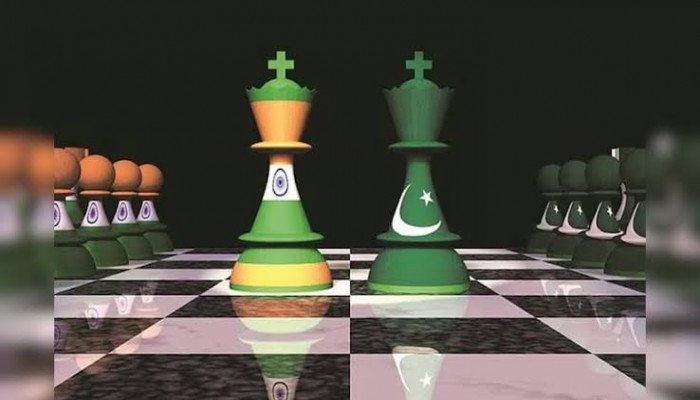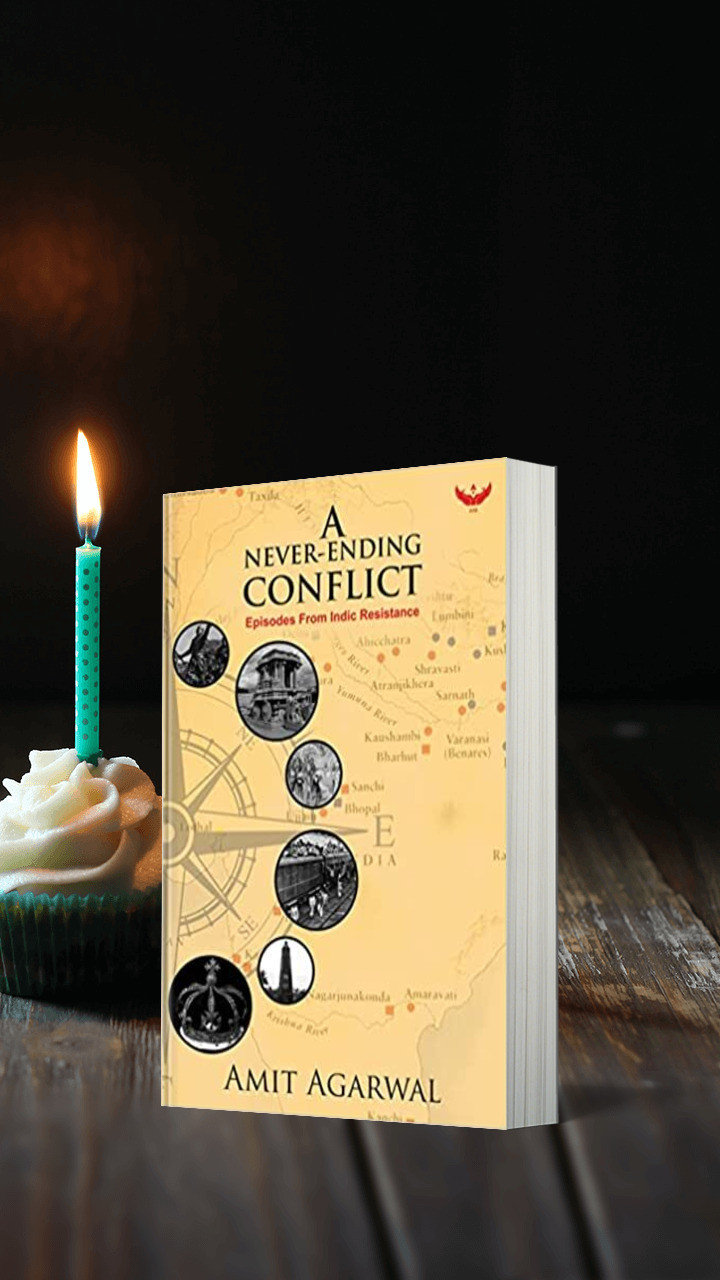Bringing History Alive on Canvas: Madhubani Painting from Bihar
- In History & Culture
- 11:02 PM, Jan 18, 2024
- Richa Yadav
Mithila!
Does the place ring a bell? Most of us have heard this name in some context or another.
This city of Bihar has a lot of historical significance. It was the kingdom of Raja Janak and Devi Sita was born in Mithila. Prince Ram and Princess Sita’s wedding happened in Mithila. Buddha and Mahavir’s story is never complete without the mention of the city Mithila. However, one reason why Mithila is so well-known is its being the hub of an art form of Bihar known as ‘Madhubani’ formerly the northern subdivision of Darbhanga district. Madhubani art also sprawls in some other villages like Jitwarpur, Ranti, Rashidpur, Bacchi, and Rajangarh of Bihar. The art is also known to have some traces in the nearby areas of Nepal.
There are different theories about when this art originated in eastern India. One popular belief is that Janak, the ruler of the Mithila kingdom got the entire city walls decorated with paintings for the auspicious occasion of his daughter Sita’s wedding with Prince Ram. Later, that style of painting came to be known as Madhubani. Another proposition is that Madhubani is a 16th-century tribal art form. Some believe it to be first discovered in the 8th century. It is hard to agree on a timeline for the origin of this art form, but this uncanny skill of storytelling through paint and bamboo pens has been passed down from one generation to another.
This art became a tradition and gradually was done elaborately on the walls of the house during wedding ceremonies, births, and other festive occasions. Inspired by nature and our rich historical stories of Ramayan and Mahabharat, people, mostly women, have been painting their mud houses depicting scenes from these epics. Ram and Sita, Ram and Ravan, Krishna with his cow, and Vishnu were fondly remembered when they found a place in several household walls in this organic art form ‘Madhubani’, which literally means ‘forest of honey’. Gradually, entire honey-like sweet garden began to be sketched in these paintings- sun, water, forests, trees, leaves, lotus and other flowers, animals like elephants, horses, cows, peacocks and other birds, fish, and even snakes, turtles, and toads.
You can find beautiful Madhubani paintings depicting the auspicious Tulsi plant revered in Hindu culture. Fish is a part of every other painting as it is seen as a sign of fertility & prosperity. Similarly, elephants and lotuses are painted for good luck whilst turtles signify firmness and union of lovers. Wedding scenes and depictions of the daily lives of farmers like hunting and ploughing sceneries are some of the most popular topics.
These paintings revolve around common themes of religious concepts, festivities, gods and goddesses, historical events, and elements of nature. Each motif has a symbolic meaning. For instance, Madhubani paintings on Ardh-narishvara, Shiva depicted as half male and half female and His consort Parvati and Goddess Kali holding the heads of demons she slayed are popular subjects. Abstract figures of deities and humans, scenes of royal courts, and social events such as the celebration of epic weddings are also beautifully depicted in Madhubani paintings.
Initially, the paintings revolved around weddings, festivities, gods, and natural scenes. Today, these paintings speak about social causes as well. Over the last few decades, the subject matter of folk art has expanded considerably, with artists touching upon themes such as gender justice, environmental conservation, and contemporary politics.
The subjects of Madhubani art have big wide eyes, pointed noses, and unbalanced bodies as a style. The simplicity of traditional Madhubani painting makes it unique. If the artists come across any empty spaces in the painting after completing the design, they usually fill it up using motifs of animals, birds, flowers, and geometrical patterns such as circles, triangles, and squares. A double line is usually drawn as the border.
In the beginning, only organic material was used for these paintings. For instance, natural dyes were made from sandalwood, indigo, pollen, lime, the milk of banyan leaves, cow dung, various flowers like hibiscus, bougainvillea, palash, aparajita juices, sandalwood, turmeric and vegetables like beetroot, powdered rice and for pigments lampblack and ochre were used for extracting colors.
Painting nibs were made of chiseled bamboo sticks, twigs, brushes, nib-pens, and matchsticks. Fingertips were also used extensively. Today’s chemical-based colours lack the touch of nature and originality in these paintings, but the artists have to do this to keep the paintings more affordable for the buyers.
Originally, these paintings were made only on the walls of houses by women; therefore, it was known to be a type of ‘bhittichitra’ or wall art. Madhubani art form has now expanded to mediums such as ‘patachitra’ or canvas, paper, fiber, glass, metal and fabrics of different kinds due to its growing popularity amongst people. Today, Madhubani art can be seen on designer clothes such as sarees, tops, shawls, bedsheets, cushions, and on several artifacts such as umbrellas, jewelry, handbags, stoles, crockery, calendars etc.
Traditionally, Madhubani paintings were made by different sects of people. Consequently, they are categorized into five different styles: Bharni, Tantrik, Katchni, Godna, and Kohbar.
The Bharni style of Madhubani art tastefully chooses colours, filling the paintings with stunning, bright colours. The Kachni style of Madhubani art is characterized by its intricate outlines using a bamboo stick or a nib-like tool called a kalam to create precise lines and bold and striking patterns. While Bharni has been produced by Mahapatra Brahmanas, Kachni has been evolved by Karna Kayasthas. The usage of monochrome and two-tone colors in the depiction of nature and line work is common. In a few of them, no solid colors are used, but only detailed line work to create patterns within the subject’s clothing, leaves, and background elements are prominent.
The Tantrik Style is deeply rooted in spirituality and symbolism. It is derived from Tantra - an ancient knowledge system that delineates the mystical aspect of life. For instance, the depiction of Goddess Kali with four hands on the right-hand side of the canvas, with sacred geometries of Mandalas and Yantras filling over half of the canvas depicts the influence of tantra on the artform. Godna or tattoo style of painting emerged from tattoo art, and it depicts the usage of cow dung and black ink in its creation. Lower castes women focused on Godna paintings. Khobar art traditionally is painted on the wall of the room where a bride and groom spend their first night together. There are Brahman and Kayastha versions of kohbar.[i] The highly symbolic paintings were used in designing Kohbar in Madhubani painting as ‘Kohbar’ paintings were created in the newlywed couple’s room as a symbol of fertility and auspiciousness.
Where paintings by lower caste artists depicted images of their own deity or village shrines and their daily lives, upper caste artists exclusively created figures from religious mythology. But nowadays, these five styles have been merged by contemporary artists. Different styles specific to certain castes and communities are slowly merging, and painters are painting across all the five styles.
Madhubani art is the primary source of income for many families of skilled artisans. With the influence of popular culture, these art forms are negatively impacted. It is becoming increasingly difficult for traditional artisans to make a living from their craft alone. We can support them by buying Madhubani paintings for ourselves and gifting them to our loved ones and supporting this traditional art form. Visit any shop today, see for yourself, and take home a tradition.
References
- Narendra Narayan Sinha 'Nirala'. Madhubani: A Contemporary History (1971-2011) Source: Proceedings of the Indian History Congress, 2010-2011, Vol. 71 (2010-2011), pp. 1243-1250 Published by: Indian History Congress
- Jagdish J. Chavda. The Narrative Paintings of India's Jitwarpuri Women.Woman's Art Journal, Spring - Summer, 1990, Vol. 11, No. 1 (Spring-Summer, 1990), pp. 26-28 Published by: Woman's Art Inc.
- Carolyn Henning Brown. Contested Meanings: Tantra and the poetics of Mithila art. American Ethnologist, Vol. 23, No. 4 (Nov. 1996), pp. 717-737.
- Story Behind Madhubani Paintings: A unique Art Painting | The Indianness (youtube.com)
- The Styles and Possibilities of Madhubani Art — Google Arts & Culture
Madhubani - Art from a Sacred Land | A film by Sarmaya (youtube.com)
[i] Carolyn Henning Brown. Pg. 718.
Disclaimer: The opinions expressed within this article are the personal opinions of the author. MyIndMakers is not responsible for the accuracy, completeness, suitability, or validity of any information on this article. All information is provided on an as-is basis. The information, facts or opinions appearing in the article do not reflect the views of MyindMakers and it does not assume any responsibility or liability for the same.



























Comments